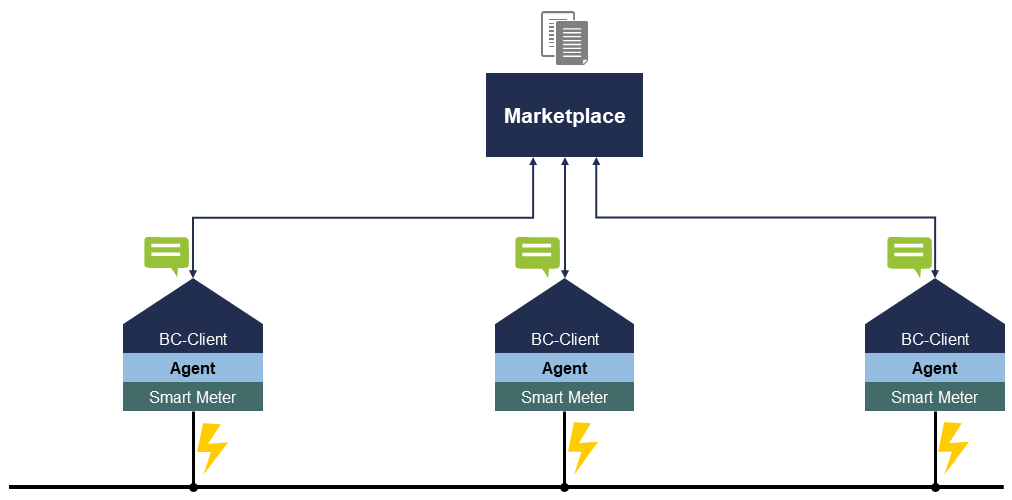Local Energy Markets for Peer-to-Peer Trading are expected to be at the center of the future energy grid. The figure underneath illustrates the common scheme for Blockchain based LEMs.

All households are connected to a grid and an information network. They are each equipped with a smart meter that measures energy generation and consumption and can forward this information digitally, an agent that predicts the respective household’s future requirements based on past values and expected environmental factors, as well as a blockchain client for communication with the marketplace.
The system operates in discrete trading periods and can be simplified to a three step process. First, each household computes its expected energy generation or consumption, as well as a price it is willing to pay or sell this energy for. These offers, consisting of a quantity and a price, are then forwarded to the marketplace, which finds an ideal solution to best satisfy all households. Finally, after feeding their energy into the grid or receiving from it, the households report their actual consumption or generation and are billed accordingly.
Information and communication technologies for LEMs for Peer-to-Peer Trading need to fulfill a number of requirements, and Blockchain has emerged as the most promising solution. Its combination of immutability, resilience, and decentralization through automated trust makes it especially fitting for the use case.
While this overall scheme has been widely accepted as reasonable and beneficial to the overall grid stability, no clear consensus as to the grid configuration and market mechanisms has been reached.
In this project, we hence research and evaluate mechanisms peer matching and market clearing prices, and consider both closed microgrids as well as partially dependent subgrids.